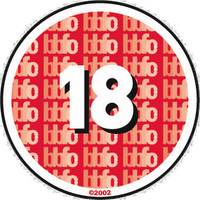The BBFC have 9 different categories which display the extent of content that can be shown in different rated films. These 9 categories are discrimination, drugs, horror, imitable behaviour, language, nudity, sex, theme and violence. The extent to which content can be conveyed depends on the target audience of the film, for example scenes featuring blood and murder would not be suitable for a young child audience. The BBFC issue these rules to ensure that all films contain content suitable for their target audience.
A 15-rated film is a film that has content suitable for people aged 15 years or over, and no one can see a film in a cinema or rent/buy the film if they are under this age. Producers have a less limited set of criteria to adhere to, as these films are aimed predominantly at a mid-teen presumably mature audience. The target audience for 15-rated is obviously restricted to people 15 years or older, which totally eliminates the younger audience. For a more specific audience, this is based mostly on the genre of the film with some such as horror or comedy being more popular but these films would still contain content suitable for viewers aged 15 or over. The criteria that producers have to consider and adhere to when producing the film are:
18-Rated Films

An 18-rated film is a film that has content suitable for people aged 18 years or over, and no one can see a film in a cinema or rent/buy the film if they are under this age. An 18-rated film is aimed solely at adults. This is because the BBFC’s guideline concerns will not override that adults have the right to choose their own entertainment. An 18-rated film can feature practically any content, but a producer has to consider the certain conventions they are not permitted to display in a film. These exceptions are:
Where the material is in breach of the criminal law, or has been created through the commission of a criminal offence.
Where material or treatment appears to risk harm to individuals or, through their behaviour, to society. For example, any detailed portrayal of violence or dangerous acts, or of illegal drug use, which may cause harm to public health or morals.
This may include portrayals of sexual or sexualised violence which might, for example, eroticise or endorse sexual assault
Where there are more explicit images of sexual activity which cannot be justified by context
